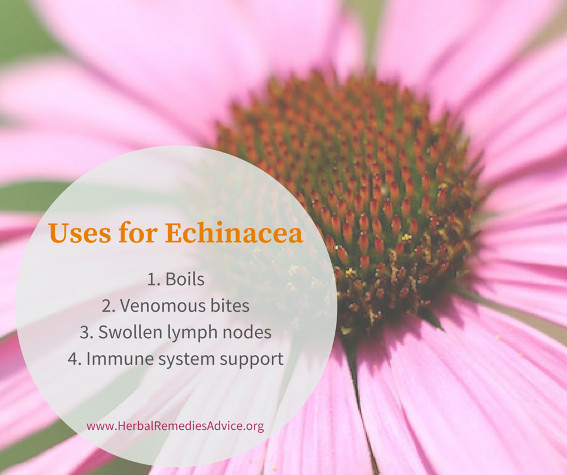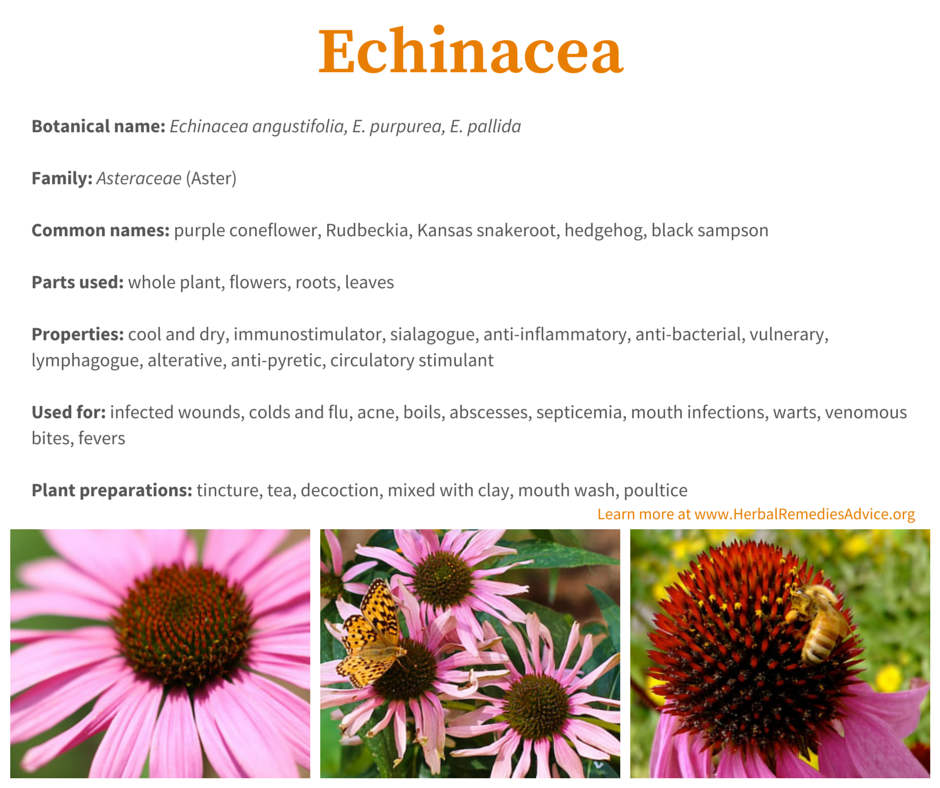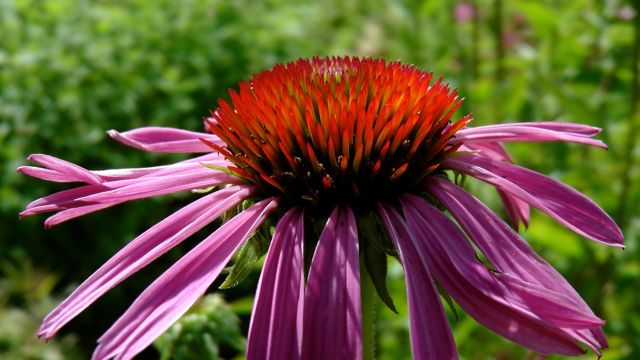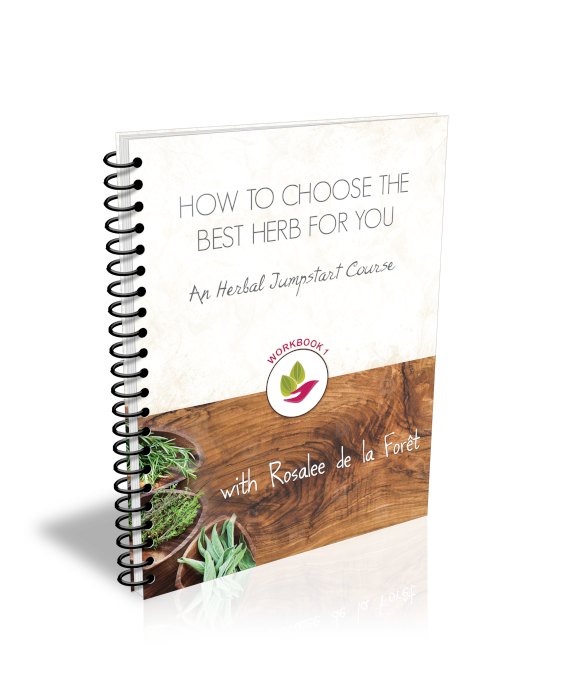Get weekly tips, recipes, and my Herbal Jumpstart e-course! Sign up for free today.

Benefits of Echinacea
Share this! |
|
There are so many benefits of echinacea! And yes, while echinacea tincture is an excellent herb for the immune system, that’s just *one* of echinacea’s many gifts! In this episode, you’ll learn the best ways to work with Echinacea, including my favorite method (which is totally underrated). And I’ll show you how to make a *potent* echinacea tincture!
After this episode, you’ll know:
► Safety considerations - what you have to know before working with this plant.
► Why it’s so important to either grow this plant yourself or only buy from cultivated sources
► The most important considerations when deciding which echinacea species to work with medicinally
► How to strengthen your immune system
► How often and in what quantity to take echinacea tincture for the best results when treating an acute infection
-- TIMESTAMPS --
- 00:00 - Introduction to echinacea
- 02:44 - Types of echinacea (Echinacea angustifolia, Echinacea purpurea, Echinacea pallida)
- 04:07 - Echinacea energetics
- 06:32 - Echinacea for infections
- 08:13 - Echinacea for venomous bites and stings
- 11:24 - Echinacea for colds and the flu
- 13:49 - How does echinacea work?
- 14:44 - How to identify echinacea
- 16:07 - Echinacea safety
- 17:55 - How to make echinacea tincture
- 23:07 - Echinacea Fun Fact
Download Your Recipe Card!
l
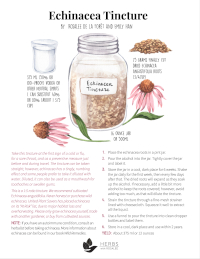
Transcript of the Benefits of Echinacea Video
|
Echinacea has become somewhat of a poster child for herbal medicine. And with good reason! Echinacea is endemic to North America and many native american tribes have been working with it for thousands of years. There are so many Echinacea benefits, for so many things, that Eclectic physician-herbalists, who were a part of mainstream medicine in the 1800’s and early 1900’s were strongly drawn to use it. Unfortunately, as a result, this once abundant plant has been over popularized and over-harvested. It’s especially important to grow this plant yourself, or only buy from cultivated sources. |
Do you have experience with the benefits of Echinacea? I’d love to hear
about it in the comments at the bottom of this page. Your comments mean a lot to me! I love
cultivating a community of kind-hearted plant-loving folks! Plus, it’s
always interesting and insightful to hear the experiences of plant
lovers out there. Your suggestion may also help others!
Okay, let’s begin by making sure we’re all thinking of the same plant…
Benefits of Echinacea: Kinds of Echinacea
There are many different species of Echinacea. The two easiest to find in commerce are Echinacea purpurea and Echinacea angustifolia.
E. purpurea is easiest to grow and tends to be cheaper to buy. Medicine makers use the entire plant (including flowers, stems, leaves and roots).
E. angustifolia is harder to grow and is therefore often more expensive to buy. Medicine makers generally use only the roots of the plant.
Later in this episode I’ll give botanical descriptions for both plants.
Some herbalists say that Echinacea angustifolia root is the best choice between the two. I think that’s overly simplified and that both plants can be made into powerful herbal medicines. The most important thing is to make sure your herbs were cultivated well, and not wild harvested, and that they were recently harvested so they are still potent.
As I mentioned there are numerous species.
My friend Christophe Bernard recommends growing another species, Echinacea pallida, because of its abundant roots. So I’ve started that in my garden as well.
Benefits of Echinacea: Energetics of Echinacea
If you taste a potent Echinacea product, or simply bite into the fresh plant (flowers, roots, stems, or leaves), you’ll experience the Echinacea zing. Its acrid taste is numbing on the throat and tongue while being dispersive throughout the body. Echinacea is therefore stimulating in nature. It stimulates immune system function, it promotes the flow of lymph to address swollen lymphatic glands and even stimulates saliva.
Energetically, Echinacea is cooling in nature and is used for signs of heat, most notably infections. Because it stimulates body secretions, it is also somewhat drying.
If you’re new to thinking about herbs as cooling or warming or drying or moistening then check out my first book, Alchemy of Herbs, to find out more about how energetic herbalism can help you choose the best herbs for you and your health situations.
Echinacea is what herbalists call an alterative herb, which broadly means to alter or move someone towards health. Alterative herbs support systems of detoxification (like the lungs, skin, lymph) to assist your body in removing metabolic waste.
My friend and fellow herbalist jim mcdonald has a great analogy for this. He says alteratives are like cleaning out the ash and soot buildup in a wood stove. Once that buildup is removed, the stove works more efficiently.
As I mentioned, Eclectic physicians popularized the widespread use of Echinacea.They learned about the benefits of Echinacea from Native Americans who had been relying on Echinacea medicine for thousands of years. Once Echinacea was brought into use within the Eclectic literature, it quickly became a favorite medicine. Eclectics considered Echinacea, above all, to be an alterative.
“[Echinacea] it is an alterative, exerting an influence over the secretory and lymphatic functions, which is unsurpassed by few, if any other of the known alteratives.” - King’s American Dispensatory, 1898
Benefits of Echinacea for Infections
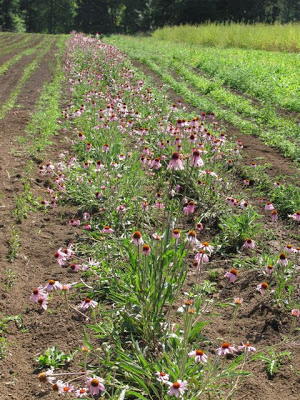 Echinacea angustifolia on a farm Echinacea angustifolia on a farm |
While Echinacea is most popular today for its ability to help with colds and the flu, where Echinacea really shines is in its ability to help the body fight off bacterial infections. I think this echinacea benefit is underrated! |
Long known as the toothache plant, echinacea tea or diluted tincture can
be swished frequently to address tooth infections or ulcerations of the
oral mucous membranes. A pilot study showed that an oral patch
containing Echinacea pupurea, Gotu kola (Centella asiatica) and
Elderberry (Sambucus nigra) was effective in reducing inflammation
associated with gingivitis.2
Herbalists regularly use Echinacea as part of a formula for addressing urinary tract infections.
Infected wounds and scrapes also do well with Echinacea, again both internally and externally.
Eclectic
herbalists used Echinacea for many other types of infections, including
syphilis, chronic leg ulcers, gonorrhea, rabid dog bites and
septicemia.3
Benefits of Echinacea for Venomous Bites and Stings
The first popularized use of Echinacea for the Eclectic Herbalists was for rattlesnake bites. We can trace this story back to self-described doctor HCF Meyer.
Historical references say Dr. Meyer had learned about using Echinacea for snake bites from a Native American woman. He then experimented with it for a number of years before going to Dr. John King and John Uri Lloyd with his findings. He claimed he had treated many cases of rattlesnake bites in animals and humans using his special blend of herbs (Echinacea, hops and wormwood). At first he was brushed aside for making such outrageous claims.
Dr. Meyer offered to send Dr. King an 8 foot rattlesnake so that he could experiment with treating animals who had been bitten. Dr. King declined. Dr. Meyer then offered to travel to Dr. King and allow himself to be bitten by the snake to prove the efficacy of his herbs in person. Dr. King again declined, but the persistence of Dr. Meyer inspired him to take a closer look at this plant.4
Although Dr. Meyer didn’t get bit by the rattlesnake in Dr. King’s presence, there are reports of him willingly submitting to this venomous reptile in order to prove his remedy’s effectiveness. In 1919, the Eclectic physician Ellingwood reported that Dr. Meyer willingly injected himself with the venom of a rattlesnake on his right hand. After six hours significant swelling had reached his elbow. He then dosed himself with his blend of herbs, taking them both internally and externally, went to sleep and woke up four hours later to find the pain and swelling was gone.5
So, I want to be really clear about something.
I don’t recommend getting bit by a rattlesnake to try this remedy out! Okay, now that we’ve got that issue sorted…
We now know that Echinacea works by inhibiting hyaluronidase, the enzyme found in rattlesnake bites which causes body tissues to “melt” and be damaged.
In this day and age, if you are hiking through rattlesnake country, certainly take your echinacea tincture along for the ride. If you happen to get bitten by a venomous snake, take your Echinacea tincture liberally, like 1-2 ounces, on your way to the emergency room to get the antivenom.
In addition to rattlesnakes, Eclectic physicians also used Echinacea for spider bites, wasp bites, bee stings, and scorpion stings, some of which can contain the flesh-dissolving enzyme hyaluronidase.6
Benefits of Echinacea for Colds and the Flu
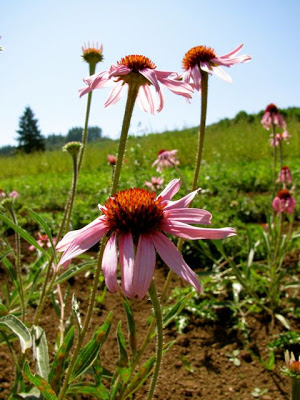 Echinacea Angustifolia Echinacea Angustifolia |
Today Echinacea is one of the most popular herbs. It is especially known and used for warding off colds or the flu, which is a more recent application of this herb. |
Another recent study showed that a patent formula of Echinacea purpurea
was just as effective as a commonly prescribed influenza pharmaceutical
drug; plus, those taking the herbal formula had fewer side effects.8
Echinacea is also safe and effective for kids. One clinical trial showed that children taking Echinacea for several months had significantly fewer colds and flu symptoms as well as fewer secondary bacterial infections as compared to those simply taking vitamin C.8a
A 2021 randomized controlled trial showed that outpatients suspected of having COVID19 who took Echinacea and ginger had better improvements in coughing, dysp-nea, and muscle pain than those who did not.8b
Another randomized control trial regarding Echinacea and COVID19 showed that taking Echinacea preventively as well as for acute symptoms had significant benefits including a reduction in viral load, a reduction in days with fever, and decreased hospitalizations.8c
Echinacea
has long been used for sore throats, both by Native Americans and
Eclectic and modern day herbalists. In this case a throat spray or other
direct application is best. In vitro studies have shown that Echinacea
purpurea is active against the bacteria that causes strep throat
(Streptococcus pyogenes).9
Another powerful effect of Echinacea
during a cold or flu is for swollen lymph glands (lymphagogue). Eclectic
physicians also used Echinacea to support the fever process for a
variety of febrile conditions such as typhoid and malaria.
Benefits of Echinacea: How Echinacea Works
Undoubtedly Echinacea works in a myriad of ways that we can only begin to comprehend.
One way that Echinacea works is to stimulate the immune system. We know that Echinacea can increase phagocytosis, an immune system response that involves phagocytes engulfing and destroying microorganisms, as well as damaged or old cells and other cellular waste. Phagocytosis is a major way that the immune system removes various pathogens, bacteria, and cellular debris.
Echinacea also can also increase white blood cells and positively affects NK cells, leukocytes and T cells.9a
There’s also evidence that Echinacea is an immunomodulator in that it can help dynamically balance the immune system’s response.
Benefits of Echinacea: Botanically Speaking
There are many species in the Echinacea genus and all are herbaceous perennial plants.
They used to grow abundantly in eastern and central North America.
Echinacea plants have recently been hybridized into cultivars for gardeners.
Echinacea angustifolia and E. purpurea are the most commonly used species for medicine. Occasionally you may also find E. pallida in commerce. For identification purposes let’s compare Echinacea angustifolia and E. purpurea.
Echinacea is in the daisy family and has both disk and ray flowers.
Both species have similar looking flowers. E. purpurea tends to have a darker purple/pink shade than angustifolia’s lighter pink flowers.
Echinacea angustifolia has narrow leaves. “angustifolia” means narrow leaf. Echinacea purpurea has broader leaves.
The roots of E. angustifolia are a tapering taproot. E. purpurea has fibrous roots.
Both plants attract a wide array of pollinators including bees, wasps, butterflies, and skippers.
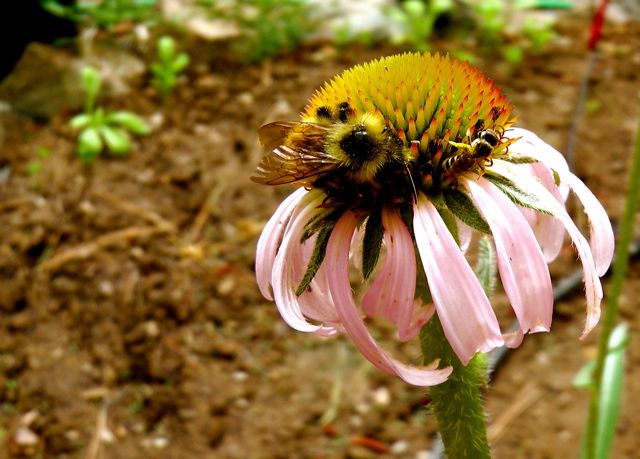
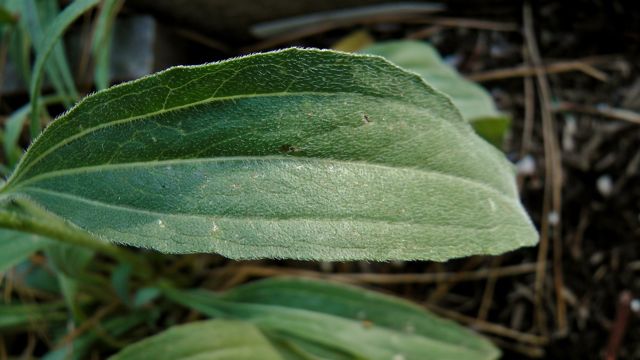 The leaves are narrow (angustifolia means narrow leaf)
The leaves are narrow (angustifolia means narrow leaf)
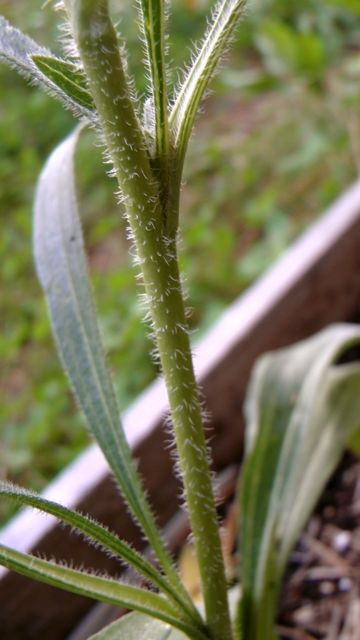 Both the stems and leaves are significantly hairy Both the stems and leaves are significantly hairy |
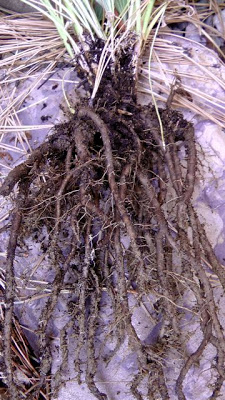 The roots are taproots The roots are taproots |
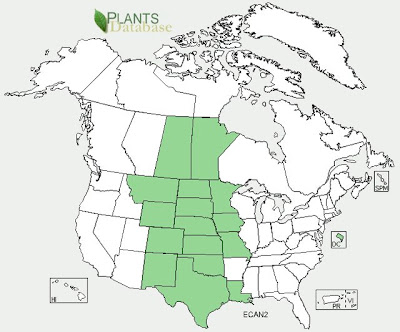 Range Map for Echinacea angustifolia
Range Map for Echinacea angustifoliad
Echinacea purpurea grows more readily and robustly than E. angustifolia. The showy composite flowers have purple ray flowers. Purpurea means purple.
The leaves of E. purpurea are broader than E. angustifolia.
The roots grow from a caudex with fibrous roots.
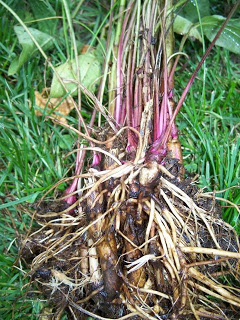 Photo by Luanne Marie Photo by Luanne Marie |
d 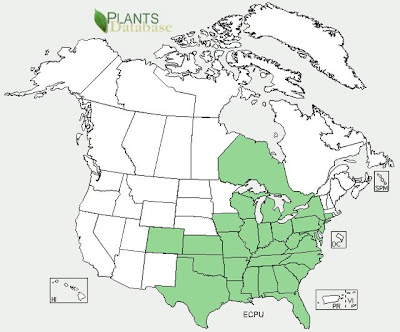 Range Map for Echinacea purpurea Range Map for Echinacea purpurea |
Benefits of Echinacea: Special Considerations
Echinacea is a powerful plant that deserves more than simply being the “cold and flu herb”. It’s an immunomodulator, amazing for clearing bacterial infections, and can even address venomous bites.
But before I share how to make an Echinacea tincture, let’s talk safety.
Echinacea has a good safety profile and can be taken as needed for as long as needed. There is a common misperception that you need to periodically stop taking Echinacea; this comes from a misinterpreted German study. While it’s fine to take Echinacea long term, I also believe in listening to your body to figure out what is best for you.
Echinacea is considered safe for pregnancy and during breastfeeding.
For people experiencing frequent colds and the flu, avoid using Echinacea as a prop for a weakened immune system. Instead, consider therapies to build up the health of the immune system, such as rest, a nutrient-dense diet, regular exercise, joyful experiences, vitamin d3 supplementation, and tonic immune-building herbs like Astragalus or medicinal mushrooms.
There is conflicting evidence that Echinacea may adversely affect people with autoimmune conditions. It undoubtedly affects some people with autoimmunity and not others. If you have an autoimmune condition it will be safest to avoid this herb or to consult an herbalist to assess your individualized needs.
Benefits of Echinacea: How to Make Echinacea Tincture
Chances are that you probably won’t be using Echinacea to combat typhoid, malaria, rattlesnake bites, or infected dog bites.
However, there are lots of indications for Echinacea that can help us with common conditions. Keep in mind that Echinacea is energetically cooling and drying and is specific for signs of heat, ulcerations, and infected tissues.
There are a couple of considerations when dosing Echinacea. One, if you are dealing with skin conditions – such as bug bites, wounds, acne, or boils – then it’s most effective when applied externally as well as taken internally. I personally like to take the tincture internally while applying a fomentation, basically a cloth soaked in a warm decoction of the root. You can also dilute the tincture for external use.
Secondly, consider how often you dose Echinacea. Eclectics used Echinacea in frequent, small doses, the exact amount and frequency varying by the practitioner. When dealing with an acute condition, such as a cold or flu, taking 30-60 drops three times a day is not ideal. Echinacea is better taken every hour or every couple hours.
Echinacea tincture can be taken at the first sign of a cold or flu, for a sore throat, and as a preventive measure just before and during travel. The tincture can be taken straight; however, echinacea has a tingly, numbing effect and some people prefer to take it diluted with water.
Diluted, it can also be used as a mouthwash for toothaches or swollen gums.
The following recipe comes from a live online course that I teach alongside Emily Han. This recipe shows you how to make a 1:5 ratio.
If you’re interested in getting step-by-step guidance in making potent herbal remedies, then check out our course, Rooted Medicine Circle.
Here’s what you’ll need to make this Echinacea Tincture
• 75 grams finely cut dried Echinacea angustifolia roots (about ¾ cup)
• 375 ml (50% or 100-proof) vodka or other neutral spirits (you can substitute 40% or 80-proof) (about 1 3/5 cups)
Here’s how to Make Echinacea Tincture
1. Place the echinacea roots in a pint jar.
2. Pour the alcohol into the jar. Tightly cover the jar and label it.
3. Store the jar in a cool, dark place for 6 weeks. Shake the jar daily for the first week, then every few days after that. The dried roots will expand as they soak up the alcohol. If necessary, add a little bit more alcohol to keep the roots covered; however, avoid adding too much, as that will dilute the tincture.
4. Strain the tincture through a fine-mesh strainer lined with cheesecloth. Squeeze it well to extract all the liquid.
5. Use a funnel to pour the tincture into clean dropper bottles and label them.
6. Store in a cool, dark place and use within 2 years.
My second book, Wild Remedies: How to Forage Healing Foods and Craft Your Own Herbal Medicine, which I co-authored with Emily Han, includes an entire chapter on Echinacea.
It also contains recipes for an Echinacea and Peppermint mouthwash, an Echinacea throat spray, and how to make an Echinacea glycerite, which is a preparation similar to a tincture but doesn’t contain alcohol.
Wild Remedies is perfect for you if you want to learn more about the plants growing near you. Included with each herbal chapter is safety information, sustainable harvest instructions and lots of fun and easy recipes for both medicine and food. You can find Wild Remedies wherever books are sold - check out the back of the book to get simple instructions on getting your exclusive bonuses, including bonus chapters and an herbal documentary series.
Benefits of Echinacea: Echinacea Fun Fact
The word “Echinacea” is derived from the Greek word meaning hedgehog. It got that name because the center cone of the Echinacea flowers is spiky and looks like a hedgehog.
If you enjoyed this video on the Benefits of Echinacea and you value trusted herbal information, then I hope you’ll stick around! The best way to get started is to subscribe to my newsletter at the bottom of this page so you can be the first to get my best herbal insights and recipes.
Citations for Benefits of Echinacea
Click to show/hide.

Rosalee is an herbalist and author of the bestselling book Alchemy of Herbs: Transform Everyday Ingredients Into Foods & Remedies That Healand co-author of the bestselling book Wild Remedies: How to Forage Healing Foods and Craft Your Own Herbal Medicine. She's a registered herbalist with the American Herbalist Guild and has taught thousands of students through her online courses. Read about how Rosalee went from having a terminal illness to being a bestselling author in her full story here.
